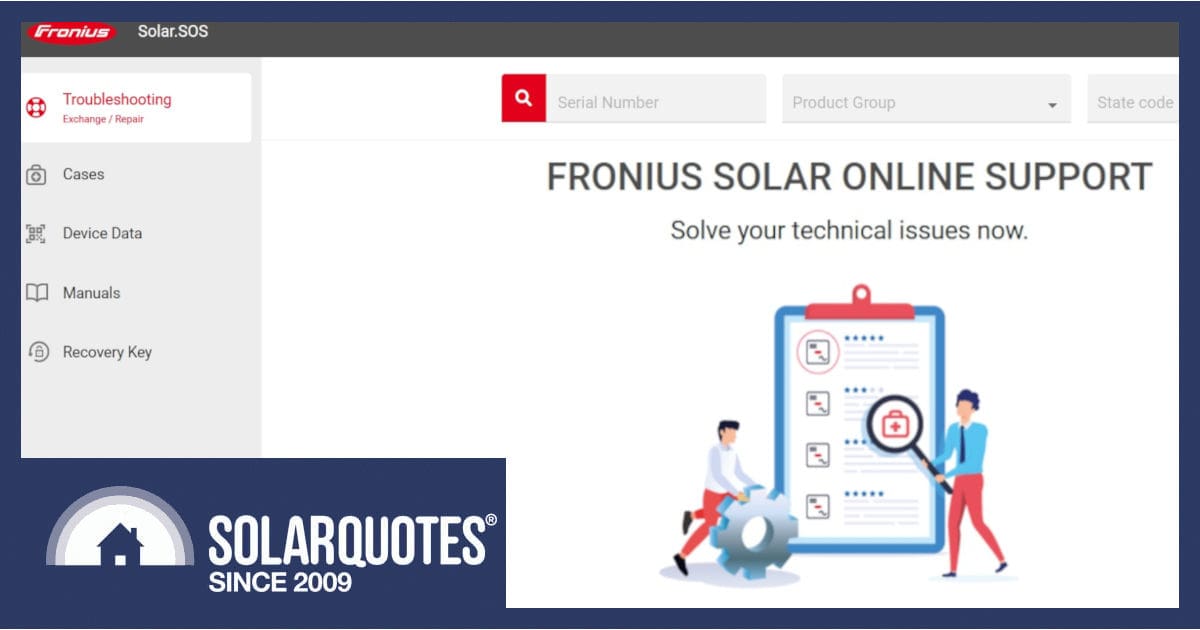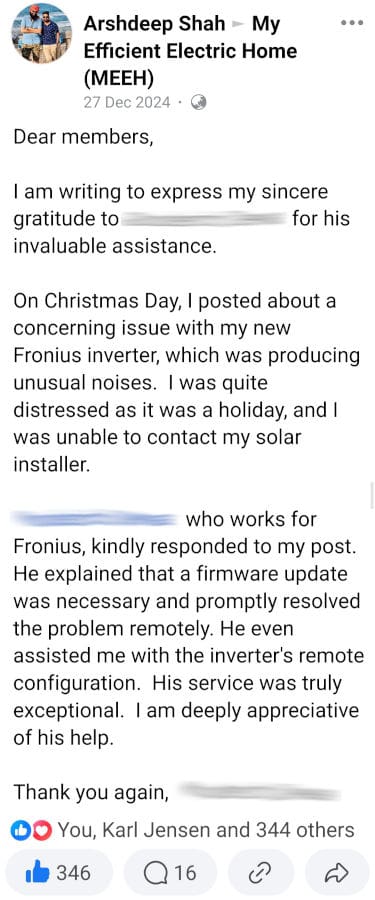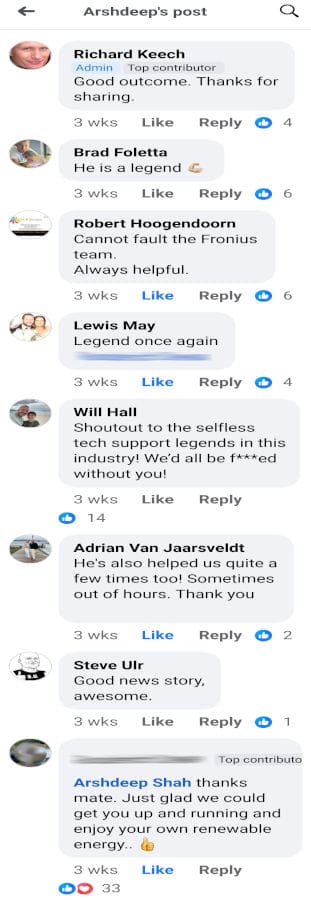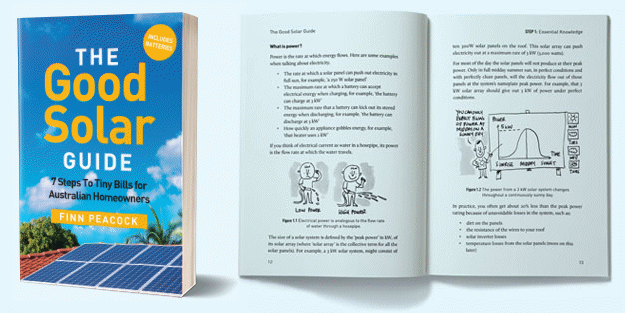
Modern solar power systems are becoming complex beasts, so it’s more important than ever that you have the best possible support behind the product you buy. Read on as we share a masterclass in customer service from Fronius.
I’ll be honest and say I’ve had no cause to ring Fronius lately, but as an installer I’ve always found them good.
Fronius were the first on my phone to have an app where you could register a warranty failure and get a new unit underway without having to speak to a human. However, there was always someone available on the phone when you had a peculiar problem, an unlisted fault code or needed help setting up your first Gen24 unit.

I know this Fronius representative, he’s often logging on and fixing things well beyond normal working hours. Names have been blurred to protect the guilty because I’d hate to see him tagged to death outside the normal support channels.
No Product Is Perfect
Of course, there will always be faulty machines from time to time. You find that out when installing thousands of them.
Years ago my former employer was selling many Omnik inverters and was approached to be the local service agent for them. The factory offered enough extra stock to replace 2% of what we sold, as that’s what their own durability testing said the failure rates were.
In reality, they struggled when loaded up to maximum capacity. With parallel arrays we could roast them in an Australian summer because there was no fan cooling. Connecting arrays in series would lessen the heat, but then they’d pop on cold winter days when the voltage climbed too high.
They wouldn’t give us 5%, so there was no deal. Thankfully, my own Omnik blew up just outside of its 5-year warranty, teaching me not to buy cheap crap from my mates and giving me the opportunity to use Fronius instead.

Even the managing director for one of Fronius’ major competitors recognises good service when he sees it.
Ask Your Installer; Have They Processed A Warranty Claim?
I’ve had one Fronius suffer a literal meltdown: we found melted metal solidified in the bottom of the case. Another went off with a bang when the DC cables on the roof were shorted to earth with a screw. The former was an illegitimate warranty claim, but neither posed any problem to get fixed.
Many of the Fronius units I’ve replaced simply had water ingress problems from poor installation methods, back when all the cool kids put DC conduits straight into the back for a seamless look and the rules didn’t prohibit it.
I’ve certainly never heard of a systemic fault with a particular model of Fronius, unlike the 5kW Growatt which ran to a 350% failure rate on one of my jobs. Or the running industry joke that was SolarEdge and their standard response of “highly unusual” when presented with yet another blown HD Wave unit.
Companies pretending there’s no problem really winds people up when the evidence is staring them in the face.
Some Support Could Be Improved
All tech support needs patience. Many of the “technicians” are I think just call centre employees, maybe graduate engineers. They strike me as people with a technical script but no lived experience.
There have to be entry-level jobs like this, but it’s also a place you should find people with lots of experience. Attracting the trades who are too worn down or injured to lift panels up a ladder should be a no-brainer.

The hours you can waste on the phone can be highly frustrating.
Tech Support Needs Two Tiers
- Tier 1 suits a first-time installer or the numpty who hasn’t read the instructions. For them, a call centre operator with a script is fine. They’ll likely sort out simple things, offer new procedures with new models, or they’ll be able to get answers if it’s a genuinely technical problem. I think manufacturers would like you to use an FAQ website for this level of support, or a commissioning app with a help section. Some of the better companies run WhatsApp and Facebook groups, where installers can help each other with basic questions.
- Tier 2 should be advanced-level tech support. This needs to be staffed by well-qualified engineers or knowledgeable trades who can speak electrical jargon to experienced installers. As one of my air conditioning mates said, “I enjoy your calls, the problems are actually interesting.”
Yes; Yes I’ve Done That!
Where I’ve found support most frustrating is having a good idea something is wrong. You’ve done all the diagnosing, testing and firmware updates you possibly can, so you ring up tech support looking for answers, and they keep telling you to go back and check what you’ve already done.
If they’re not listening to what you say, and just reading a script, it gets so frustrating and then people start swearing at each other.
As my manager once said, when he worked for an Internet Service Provider and had an issue, he wanted an option 9 on the phone keypad, a button you could push that said;
“Yes, I’ve done the basic things, now put me through to someone who knows what I’m talking about!”
Which Inverter Has The Best Support?
The feedback I’ve seen lately includes examples good and bad:
- Solis has a great reputation despite its budget market position.
- Growatt is reportedly improving, but its position leaves it exposed to cheap installers who offer poor support. Growatt’s official installer social media account recently alerted me to a significant change in warranty and technical support. Their old email inbox closed on 12th February, and it is perhaps typical of Growatt that this post went out 5 days afterward.
- Sungrow is both brilliant and dismal. As an electrician using the tools and asking questions about a 3-phase smart meter, I found the images ambiguous and tiny text difficult to read in the printed instructions. The answers I sought on the phone were also contradictory depending on how I asked the question. I’m pleased to report that Sungrow’s support has been stellar recently, even though I’ve thrown a bomb or two at them.
- SolarEdge are a pain in the arse according to installers, but SolarEdge themselves swear they’re doing better.
- GoodWe are trying hard, but may be difficult to raise on the phone sometimes.
- Enphase support is great in my experience. They answer the phone in minutes and email me back inside half an hour, but that could be down to having the right address.
- Tesla has waned from good to ordinary as I understand the current situation.
- Selectronic has brilliant people working for them, but like the wider industry, they’re short-staffed, so there can be delays.
For Your Installer, Less Is More
The best-organised companies I know limit the amount of stuff they sell. You could argue the incredible success of Penrith Solar is in no small part down to them using nothing but Enphase.1
When long term retailer Suntrix sadly closed down, they had a laundry list of suppliers to refer warranty to. It would be impossible to be across all the ins and outs of a dozen inverter brands.
When you have to train staff, it pays to know a product well. Being across the foibles helps speed installation & problem-solving. It also helps cement relationships with the OEM suppliers. You can minimise the need for support calls and maximise the attention they pay when a problem does crop up.
For a firsthand look at how happy (or completely enraged) customers are with their inverter support, take a look at our inverter reviews. For more on what else to look out for, take a look at our comprehensive guide on all things inverters.
Footnotes
- Using only one supplier is also a double-edged sword; if they fall out of love, fall down the technological capability scale, fall off the technically approved list, or fall from the face of the earth, your solar business is in trouble ↩

 RSS - Posts
RSS - Posts



My SolarEdge failed and the company was happy to replace under warranty. Unfortunately someone else with an identical name at the opposite side of Sydney had the same failure at the same time. I spent weeks waiting for the supply and instal because the contractor kept going to the other address.
Great to see a post that comes from an installer with experience who is able to comment on the service contacts. You hit the nail on the head with this and emphasized how important knowledgeable staff are to get the answers correct and in as short a time as possible! Time is money!
Interesting read. As someone who works in tech support I genuinely enjoy my job every day despite having its own own challenges and frustrations. Some trades have no appetite for troubleshooting and think it’s beneath them, defaulting to “can’t you just send someone out”, someone expecting an army of angels who will fix someone else’s mistakes for free.
Some people will swear until they are blue in the face they have checked or changed something, but it isn’t until we have them to do it again we find that they haven’t, and the problem magically goes away. We’re all human and have to be humble enough to accept we’re wrong sometimes. Engineers are the worst for it, they call for help, eat up your time telling you you’re wrong, then express disappointment when the advice given works. We also need to police warranty claims, a majority of product failures are due to incorrect installation. It’s easy to become sceptical of the trade on the other end of the phone when so many devices come back with a roofing screw through a circuit board, or no fault found after testing.
Noted you refer to one vendor delivering a 350% failure rate. How can that even be a thing or make sense? Stephen Phillips
Hi Stephen,
Two inverters on the same premises, failed agian and again because they’re a rubbish design, replaced by “refurbished” warranty units, serviced by a contractor.
Read more here.
One of your jobs had a 350% failure rate. What does this mean? If one of your jobs was to install say 10 inverters then 35 failed?? Can one inverter fail more than once??
Hi Kingsley,
The inverters failed, then the replacements failed as well because they were “refurbished” units of the same runbish design.
Here’s the article
https://www.solarquotes.com.au/blog/are-growatt-inverters-any-good-heres-an-installers-opinion/
I have a SolarEdge installation. My inverter died just before the 5 year warranty. I think I am fortunate as this was replaced at no cost to me for installation without question. I was happy to see that I received an automated email saying it was faulty . The replacement took about one week to be sourced and installed. The replacement was a new unit. Originally this was installed in a location where it had direct afternoon sun. I had specifically asked the person who quoted for it to placed it in shade, unfortunately this was not done at installation. I now have a awning cover to prevent the direct sun so hopefully it might last more than 5 years? I think I am fortunate it failed just before the warranty period not a few months later. I am happy with this system and really like the SolarEdge app interface, they even have an option for my smartwatch.
Hi Reg,
Glad to hear you had a good experience, for so many it’s only the squeaky wheels that get heard.
We had a Goodwe inverter installed 3 years ago and it recently had a melt down. Our installer was Solar Dynamics in Mordialloc and they sent a tech to look at it. They then raised the warranty claim with Goodwe and followed them up to get the replacement unit and then installed it. We only had to make one phone call to our installer and it was all fixed. Sounds like we selected the best installer and a manufacturer who honored the warranty.
Great to hear Tony.
Thanks for the feedback.
Be sure to leave reviews for everyone else to pick up.
GoodWe also have a page here.